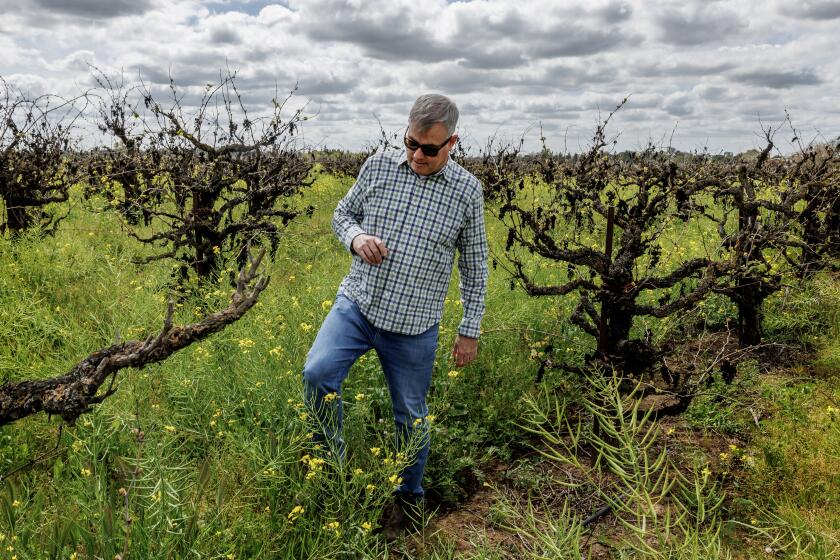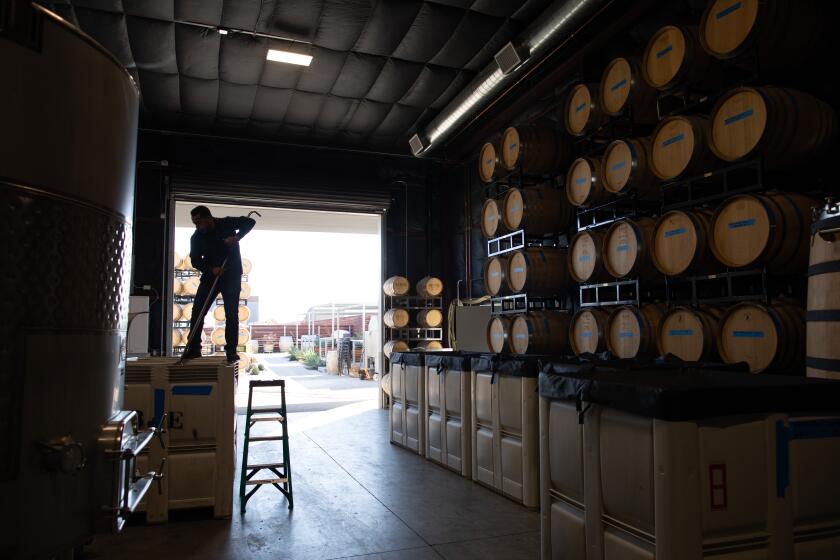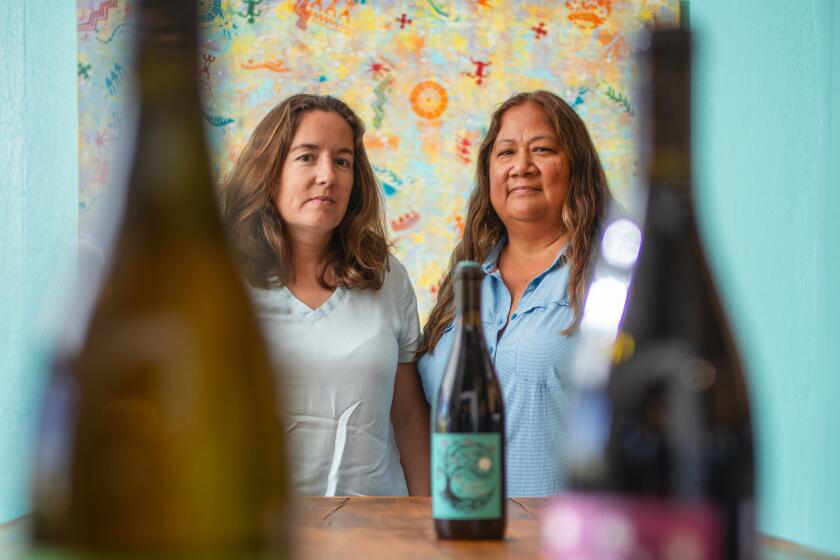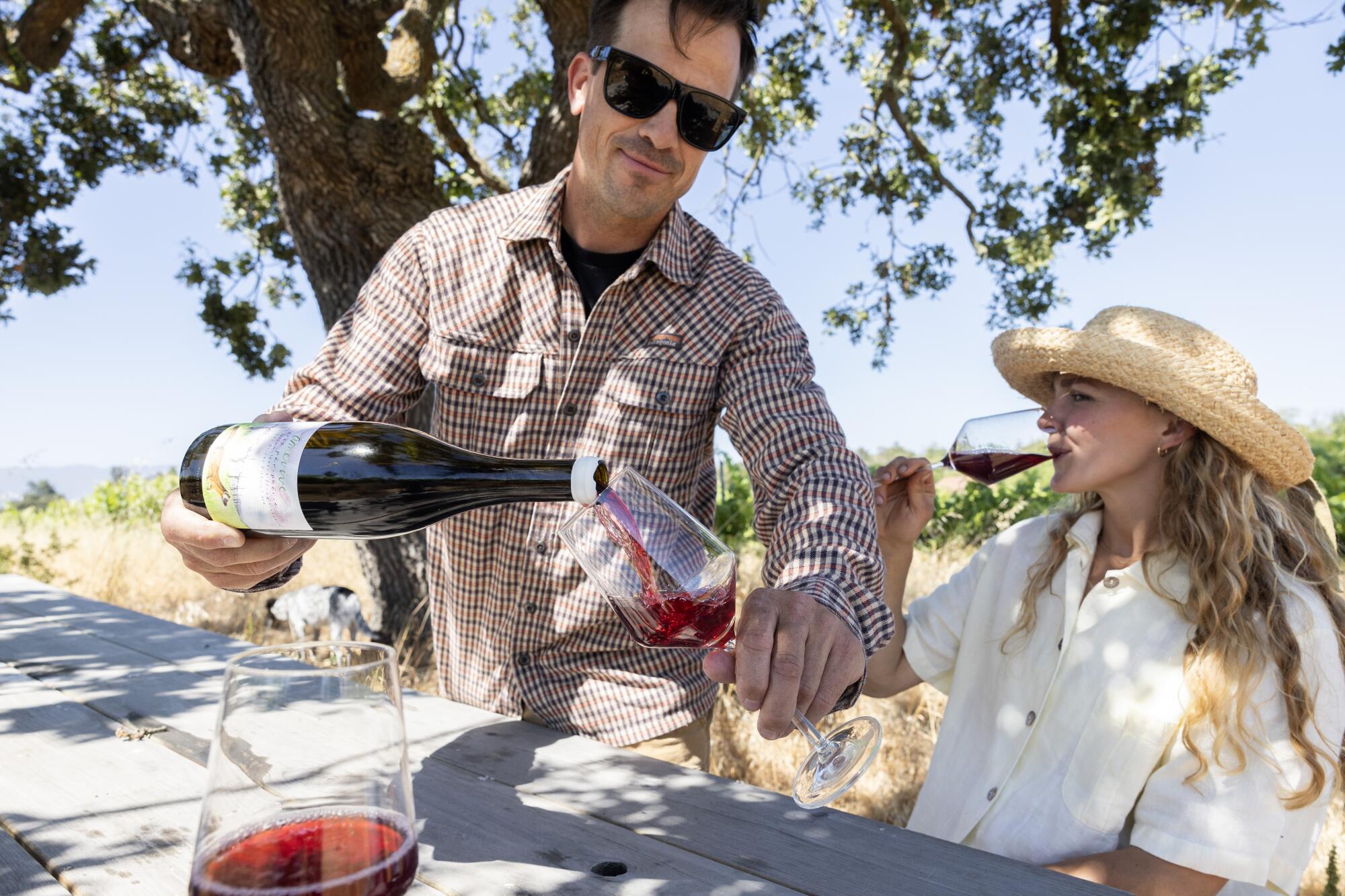
- Share via
In the pastoral patchwork of vineyards west of Highway 154, winemaker Alice Anderson and her partner, Topher De Felice, farm a historic 10-acre property with the help of her small herd of animals, growing grapes for some of the most singularly expressive wines in California.
The manner in which Anderson and her flock — a menagerie that includes ducks, chickens, 15 head of sheep and a rescue dog — approach their work blows past what would be considered organic, embraces the mystic rituals of biodynamics, and is likely to be referred to as regenerative, a voguish term that is not without controversy.
Yet some experts say that a broad and immediate commitment to responsible farming practices could go a long way toward mitigating the environmental challenges posed by climate change, soil erosion, decreasing rain and any one of a number of potentially devastating vine diseases. Studies show we may lose grape crops in California and beyond by the end of the century.
Struggling California vineyards are having to compete with bargain-basement wine prices from overseas growers, due to global oversupply.
“The way we manage soil, water and biodiversity as an inexhaustible expense account is over,” says Oregon winemaker and viticulturist Mimi Casteel, one of the principal minds behind the movement toward responsible grape farming. “We are in the final decades of the vast majority of our agricultural soils if a very dramatic change isn’t made yesterday.”
Among those at the forefront of change are Anderson and De Felice, who started farming the Ibarra-Young vineyard four years ago, adopting intensely holistic methods.
Many of the leading voices in the wine industry, including Casteel’s, are loath to codify or define regenerative viticulture. The fear is that an existential imperative will become a “greenwashed” commercial tool short on substance and intended impact.
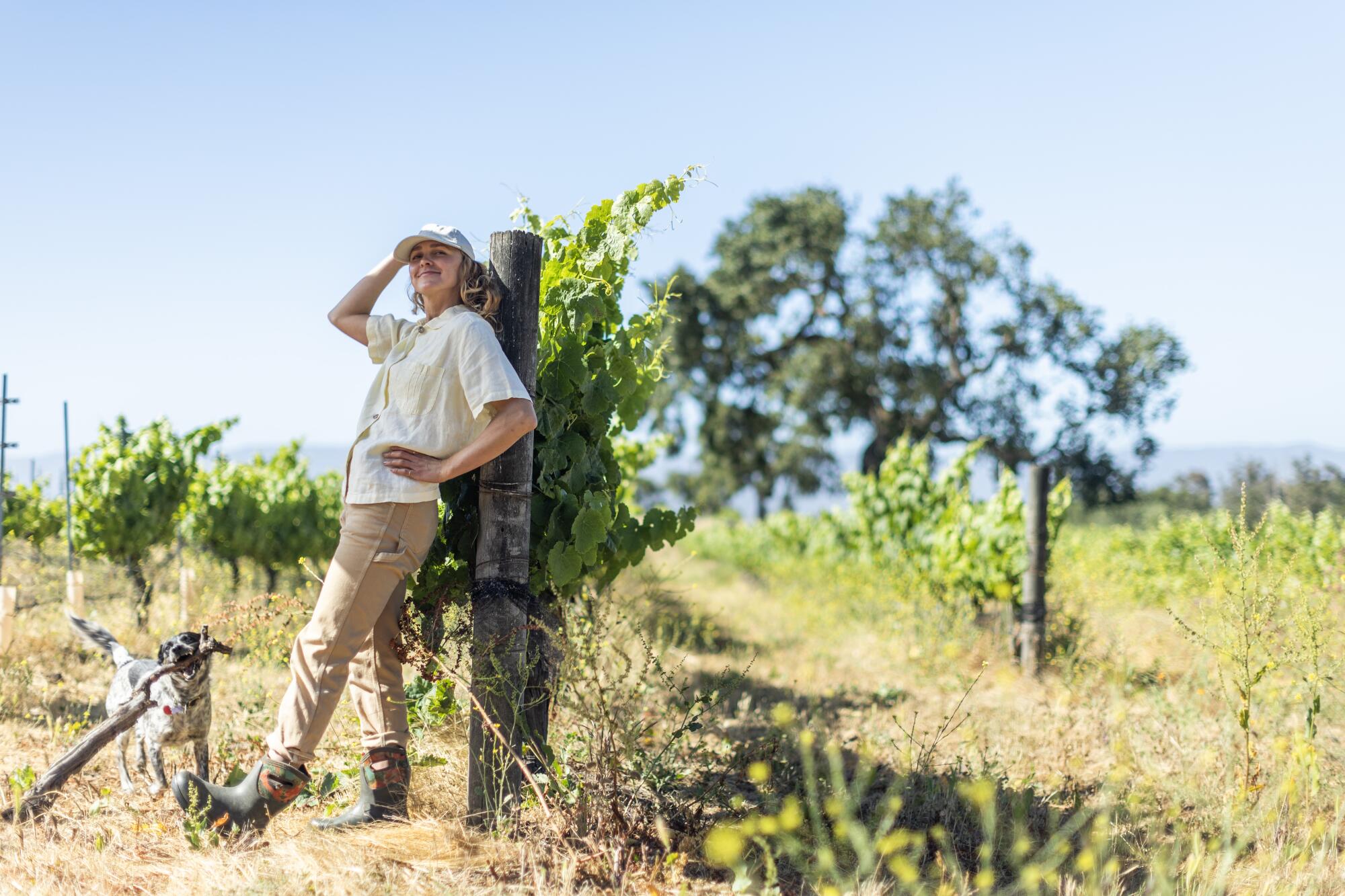
No matter what it’s called, “the goal is to create a system that sustains itself,” says Anderson.
For Anderson, that system necessarily includes the integration of animals, cover crops between vineyard rows and a firm commitment to no-till farming. These practices aid in the development of a potent yeast population entirely specific to Ibarra-Young, which Anderson relies on to fuel her fermentations. As a result, the wines vibrantly display the unique DNA of the vineyard as opposed to the anonymous imprint of commercial yeast.
If terroir, the inherent characteristics of a particular vineyard site, drives your interest in wine, Anderson says sites farmed in this manner can yield wines that more fully and dynamically express their “there-ness.”
A legendary vineyard
Planted in 1971, Ibarra-Young was one of the very first vineyards in Santa Barbara County. Iconic winemaker Bob Lindquist, who blazed a trail for wines produced from grapes traditionally associated with the Rhône Valley of France, farmed here from the mid-1980s until 2018. His commitment to grapes such as syrah, grenache and viognier launched that category and established its benchmarks, yielding a body of work that stands as one of the most significant in the region’s history.
The stories of Latinos — particularly Mexican-Americans — in the wine industry were often relegated to those who prune or graft the vines or work in the cellars. But that’s changing as Latino vintners grow in number and influence.
Now the baton has been handed to Anderson, who has held the lease since 2020. Along with De Felice, she makes wine under the label Âmevive, a whimsical word blend that she defines as “lively soul.” Âmevive has been rapidly recognized by the wine community for its work, surfacing on retail shelves and wine lists around the country.
Farming to create a system that restores, rebuilds and nourishes its environment does not simply mean having animals on the property, Anderson says. It means developing a symbiotic relationship with them.
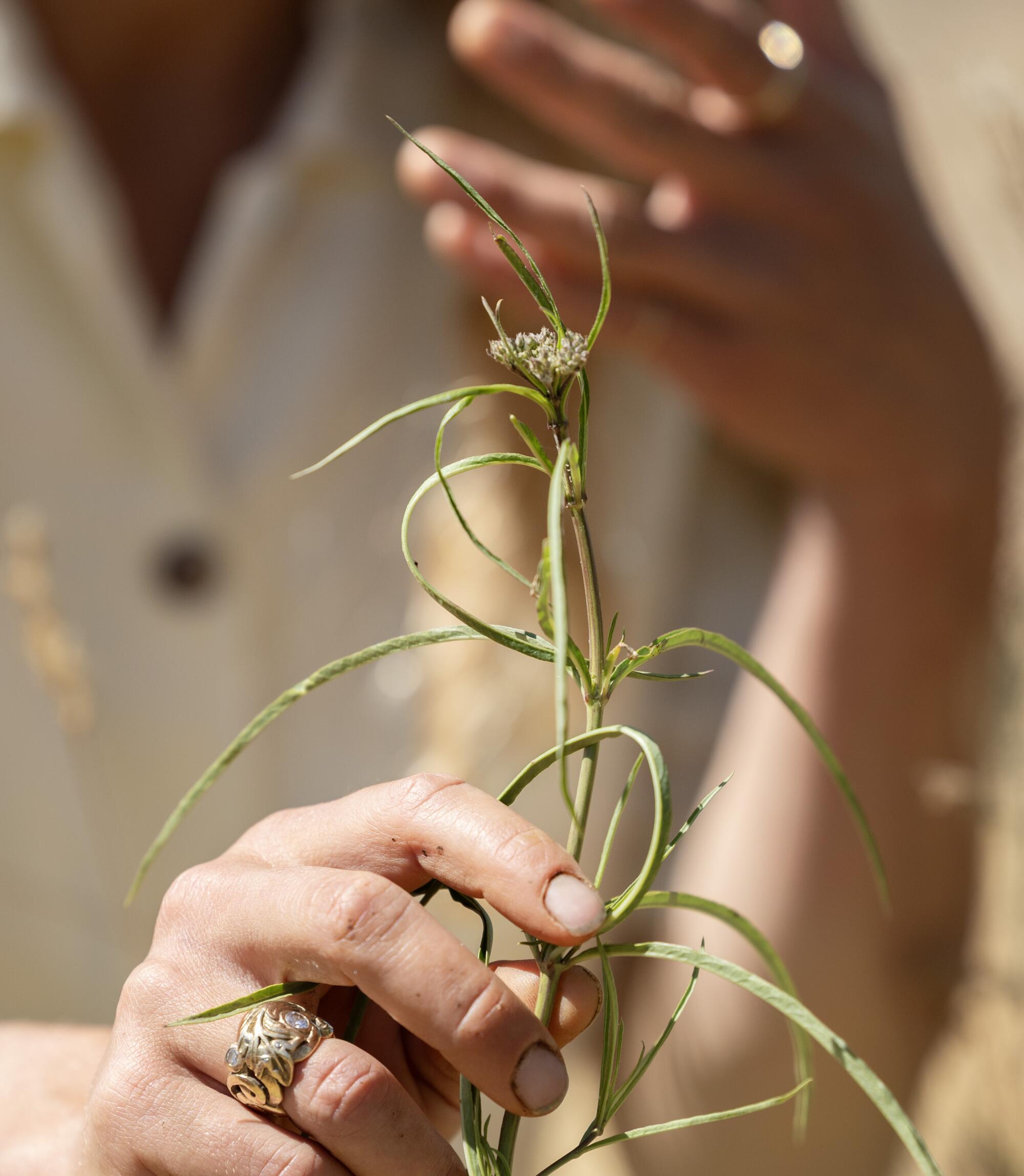
“I think the working bond between humans and animals can be very powerful. The energy that is created in a bond like that would certainly be translated to the vineyard,” Anderson says.
Each species grazes the vineyard with its own particular focus, eschewing the need for a diesel-guzzling tractor, rooting out unwanted pests and depositing manure as a natural fertilizer.
“I love having different species,” Anderson says. “You have a diversity of microbiome. The more microbial diversity you have, the more nutrient diversity you have for your plant. So if you are feeding your soil and increasing the health of your soil, you’re therefore increasing the nutrient density, the living potential of everything growing above soil.
“And when you support that through composting and doing compost tea sprays and using only holistic products, you create a closed, self-sustaining system.”
Her compost pile is a wonder to behold, fed by material almost entirely from the property. In turn, composting makes these ingredients bio-available and nourishing to the soil.
“We haul out all of our canes from the pruning season and chip them, and that’s a big carbon source. We bring the pomace [stems, seeds and grape skins] from the winery back to the vineyard to compost. That’s a big nitrogen and microbial component.”
All the chicken manure from the chicken coop is a big nitrogen component as well. It’s a sort of feedback loop returning poop, pomace and prunings to their source.
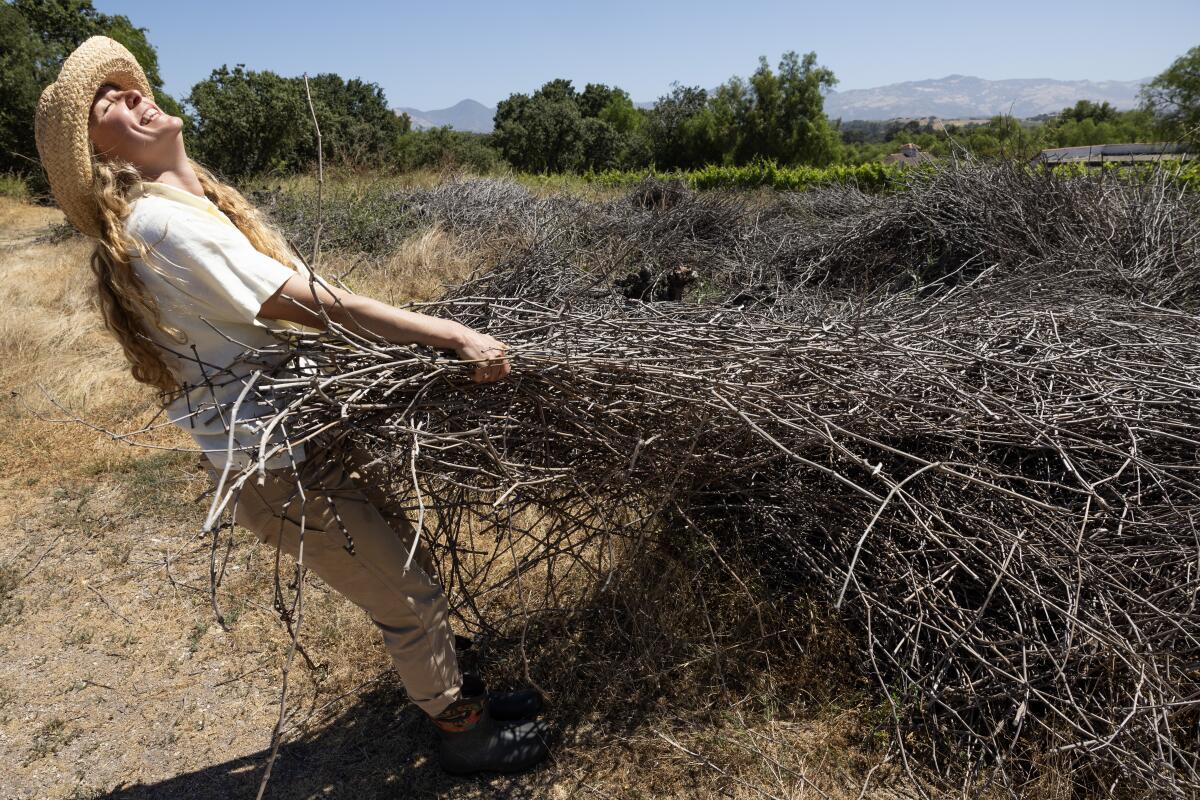
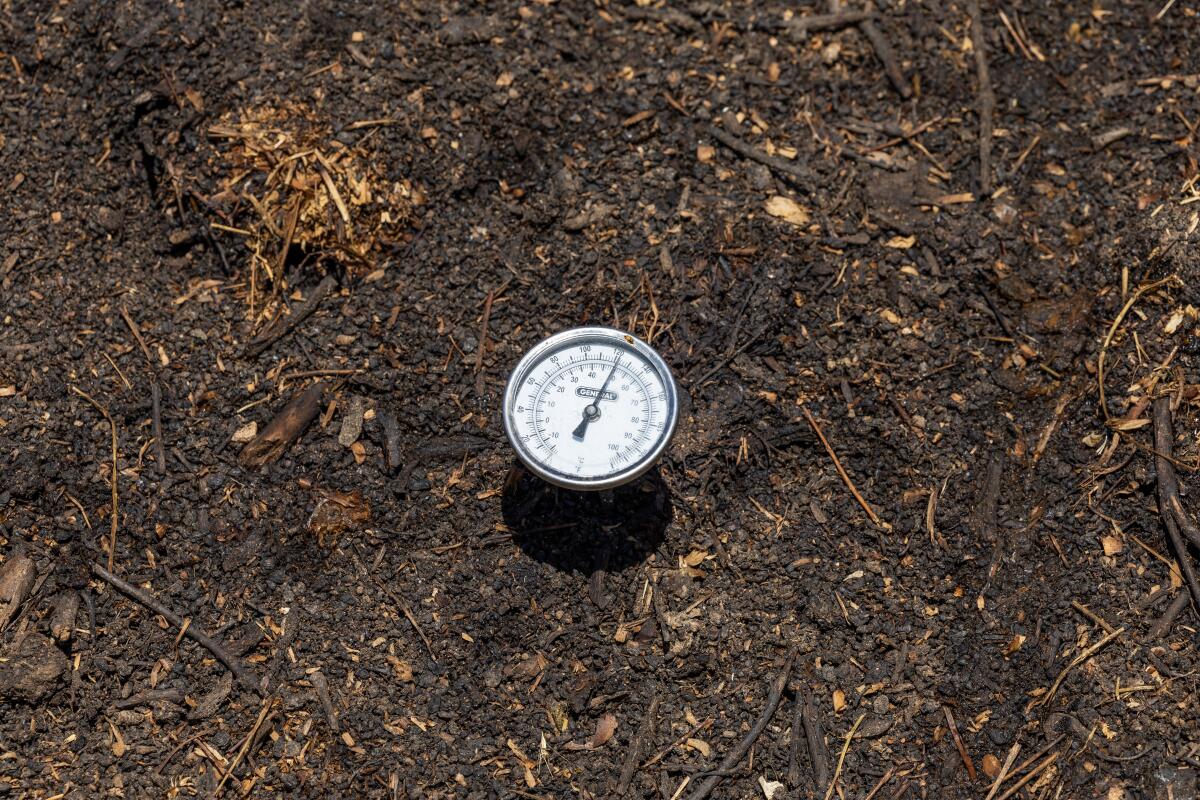
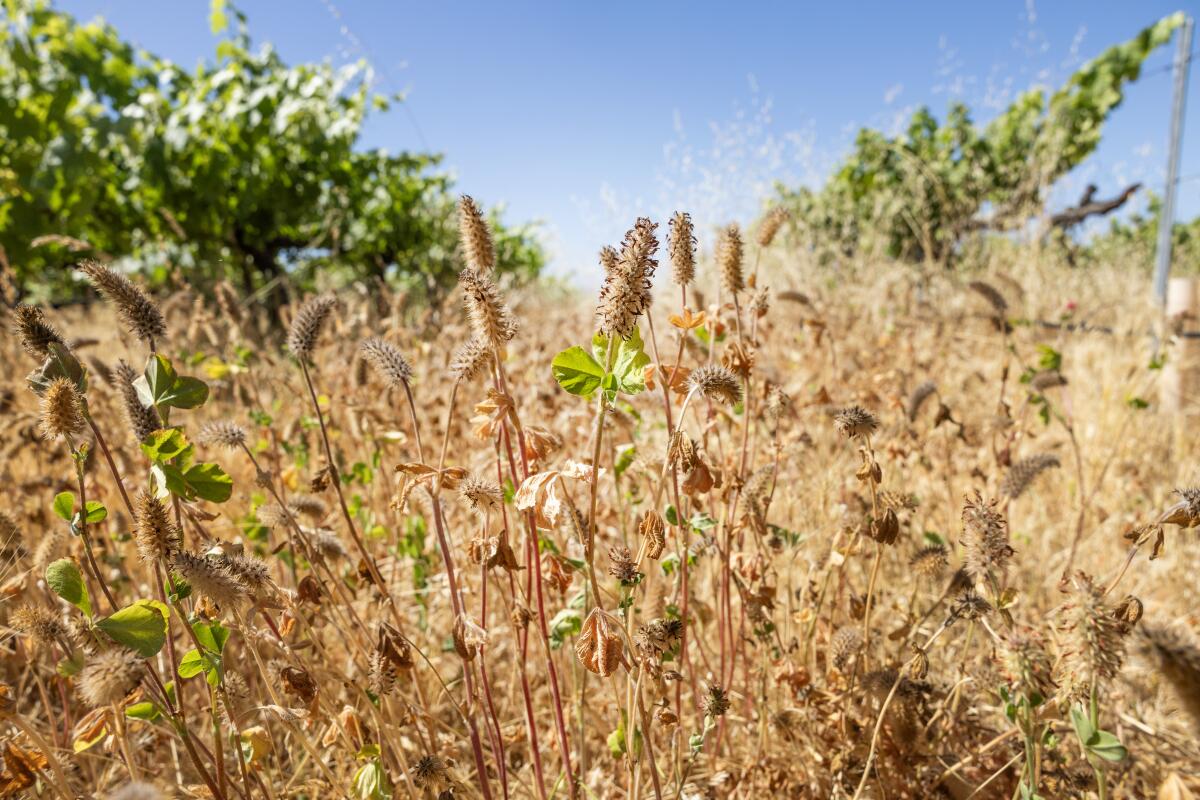
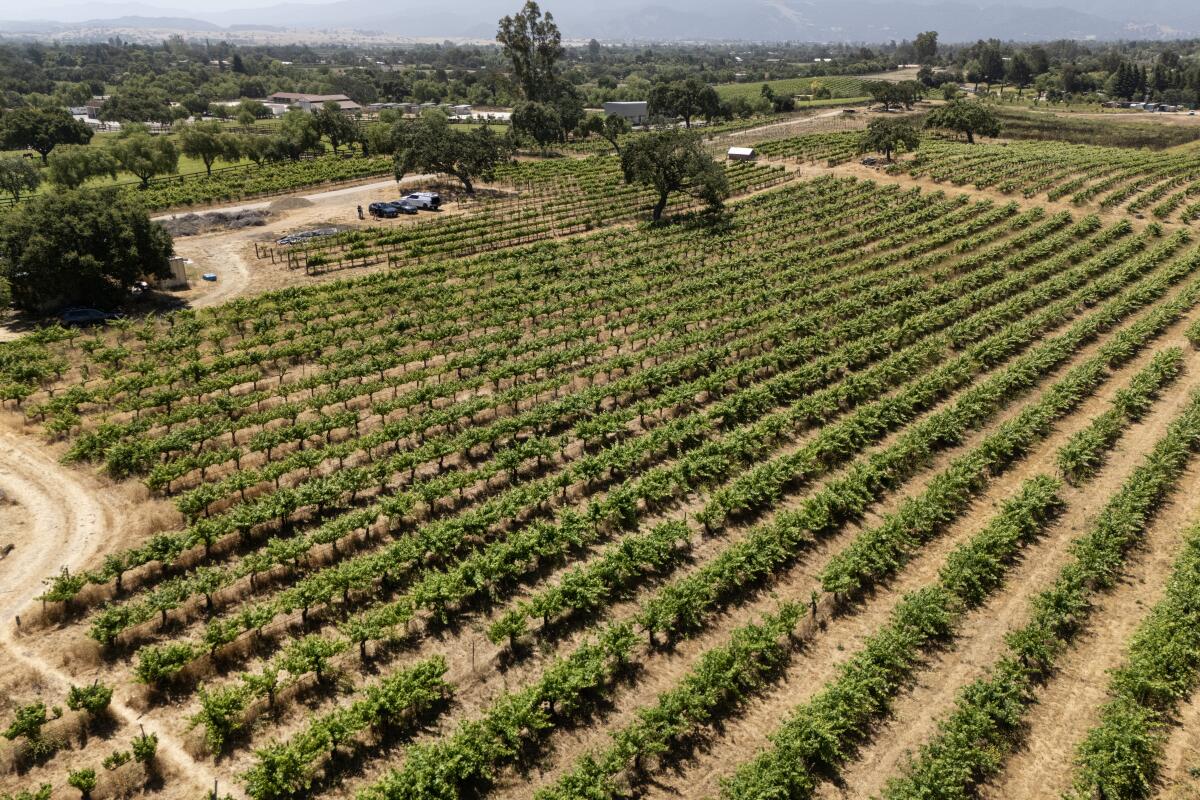
Vine cuttings at Âmevive will get chopped up and added to the compost pile. Pictured with the compost pile, a thermometer measures the temperature. Below, cover crops grow between the rows of grapes. (Myung J. Chun/Los Angeles Times)
‘We want a live system!’
Cover crops are another prodigious part of Anderson’s program. Plants between the vineyard rows help to prevent erosion, maintain topsoil, supply nitrogen, sequester water and carbon and attract beneficial insects.
“I plant a combination of different things every year. I haven’t planted the same species in the last four years, so I think I’ve planted 45 different species,” Anderson says. “Lots of different types of clovers, different types of peas, many different types of perennial grasses, and some annual grasses. Many different species of flowers that are native to the Santa Ynez watershed.”
At Camins 2 Dreams, a Chumash Catalunyan couple make ‘underrepresented wine by underrepresented people’ in the Santa Rita Hills.
Given her commitment to the “understory” of her vineyard, Anderson is a staunch advocate of no-till farming. By leaving her soil largely undisturbed, she says, her cover crops and the biome below can thrive and develop a veritable “communication superhighway” among the various root systems.
Beyond the vine rows, Anderson and De Felice have added diverse and vibrant “pollinator rows” and a new hedgerow. These provide habitat and a food source for insects and critters that otherwise might not thrive in a traditional monoculture system. Fostering a multitude of species enhances natural pest control and provides a food source for wildlife that are encouraged to live alongside the vines.
“We want a live system!” Anderson says. “Also seeing flowers everywhere just makes me happy.”
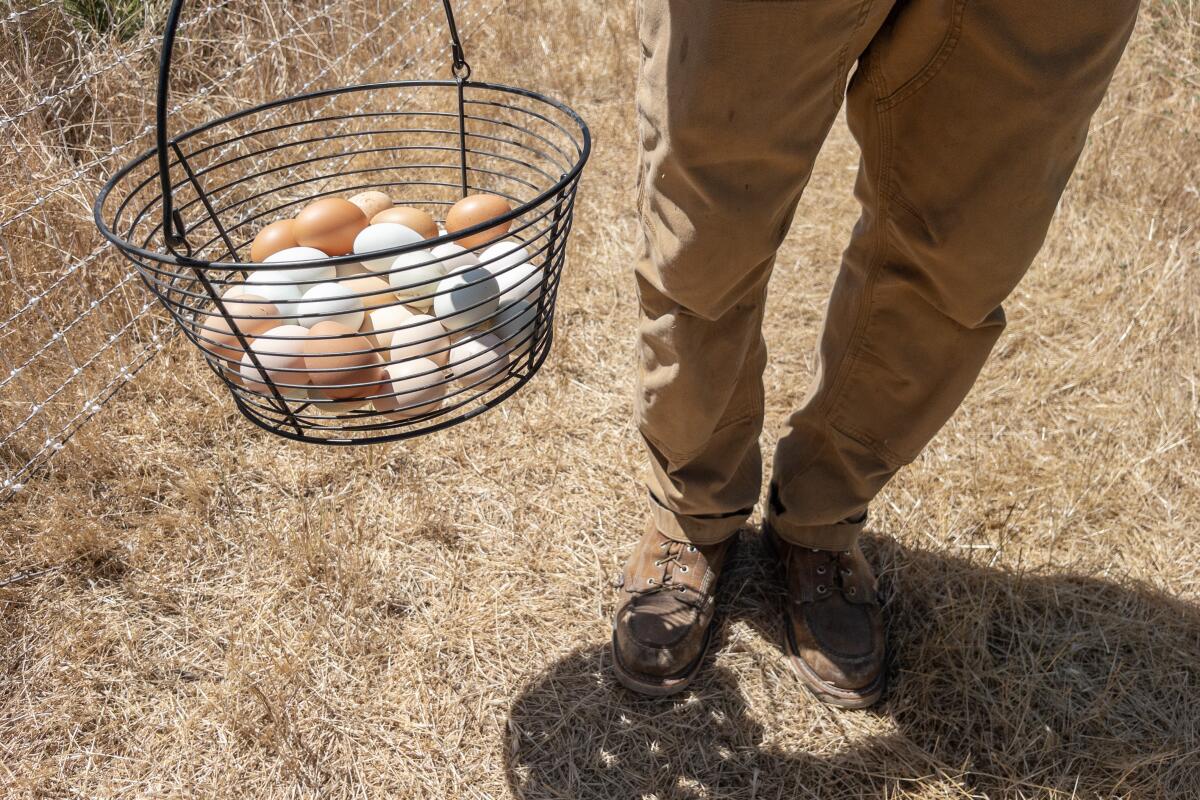
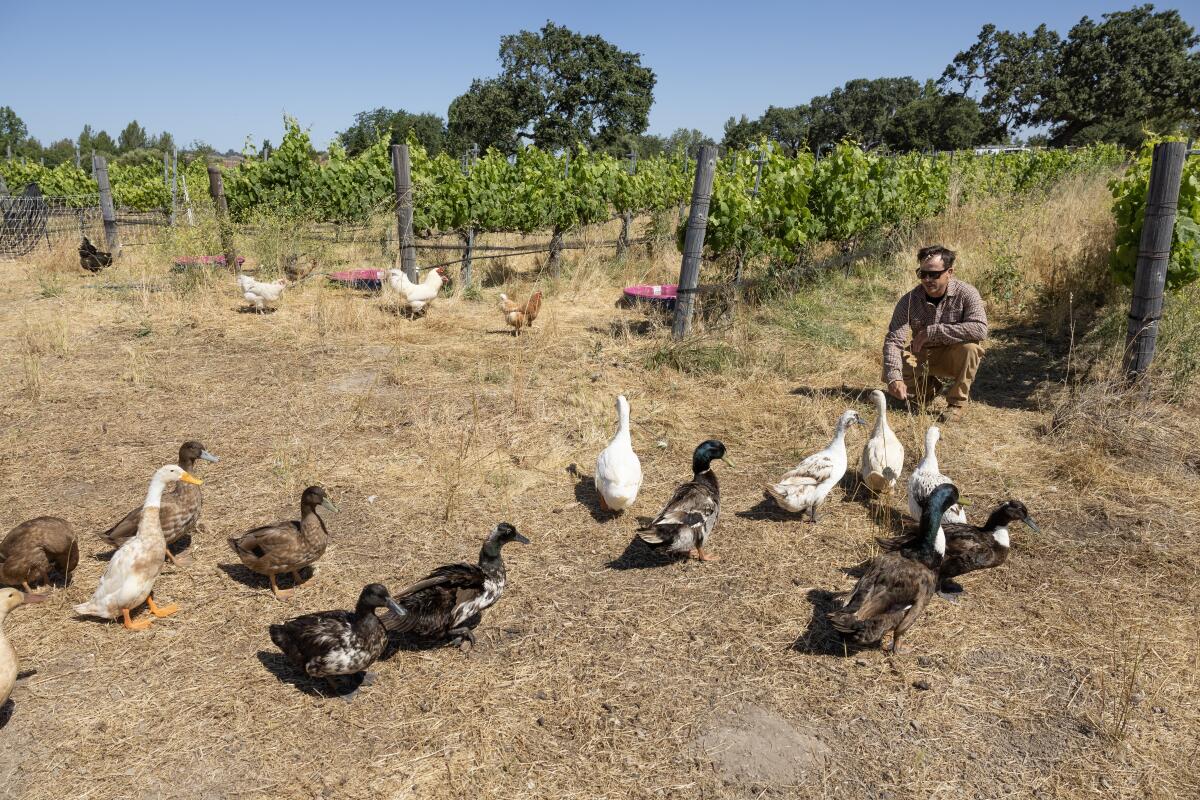
Hens at Âmevive provide fresh eggs. “I think the working bond between humans and animals can be very powerful. The energy that is created in a bond like that would certainly be translated to the vineyard,” says Anderson. (Myung J. Chun/Los Angeles Times)
Anderson’s infectiously joyful spirit is on full display as she walks the vineyard. She beams with pride at every emerging bud or bulb in her new hedgerow, at the tuft of wool her grazing sheep left hanging from a gnarled vine, at the bursts of Spanish lotus and lupines that are native to this watershed, at the vivid calendula, which might possess properties that help manage pests and pathogens.
Uncommon wines
There is no denying the dynamism of Âmevive wines. They are fully transparent gateways, vividly and energetically expressing grape and place. With an equilibrium often elusive in California wine, they are light on their feet with no shortage of complexity. The syrah is a stunning example of the varietal and a fitting homage to the land that launched Anderson’s passion for the grape. Early in her career, she spent several harvests in the hills of France’s northern Rhône Valley making syrah for one of that appellation’s most renowned producers.
But the most intrinsic expression of Ibarra-Young is her “Périphérie.” She and De Felice recognized that two rows of vines on the western edge of the property, from the original 1971 plantings, were inexplicably performing in a completely different manner from the rest of the vineyard. They decided to isolate those grapes, two reds and a white (syrah, mourvèdre and marsanne), and ferment them together to produce an uncommon wine that checks a lot of seemingly contrasting boxes. It is powerfully packed with exotic red and black fruit but is luminescent, it takes well to a chill but would be right at home with hearty food, and in spite of its exuberance, it clocks in at under 13% alcohol.
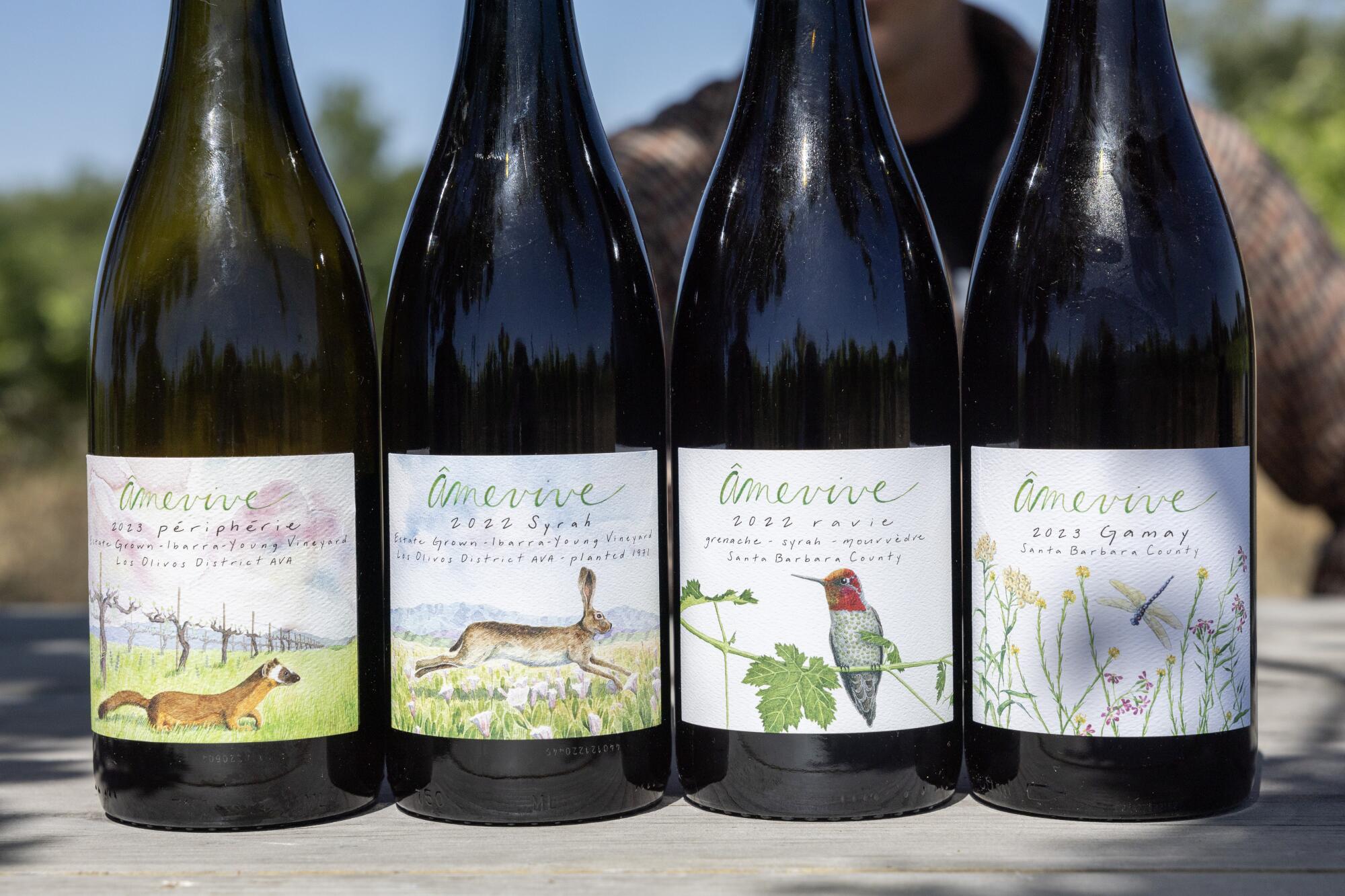
The vineyard also has some Spanish grapes that were planted by Lindquist, including “suitcase” tempranillo brought from the famous region of Ribera del Duero. Anderson also purchases fruit from a handful of other vineyards in the region to make wine with grape varieties she doesn’t have at Ibarra-Young. These bottlings include a gamay and her first sparkling wine, from the Savoie grape mondeuse. This year will see some of the tempranillo replaced in favor of white “Rhône” grapes at Ibarra-Young, and the addition of a new 8-acre vineyard, also in Los Olivos, that will provide them with more syrah, as well as sangiovese and cabernet sauvignon.
Anderson says her wines “should make you feel alive. They should make you feel happy. Because I enjoy every freaking second of what I do. Everything from walking the vineyard rows, moving my sheep, to harvesting at 2 a.m., to managing fermentations for 16 hours straight, to making blending decisions, to bottling, to painting the labels with my mom, to taking photos of the process, to doing a little bit of IT work on the website, to pouring at dinners.”
Anderson follows this tally of tasks by reflexively whispering, almost to herself, “I’m so lucky.”
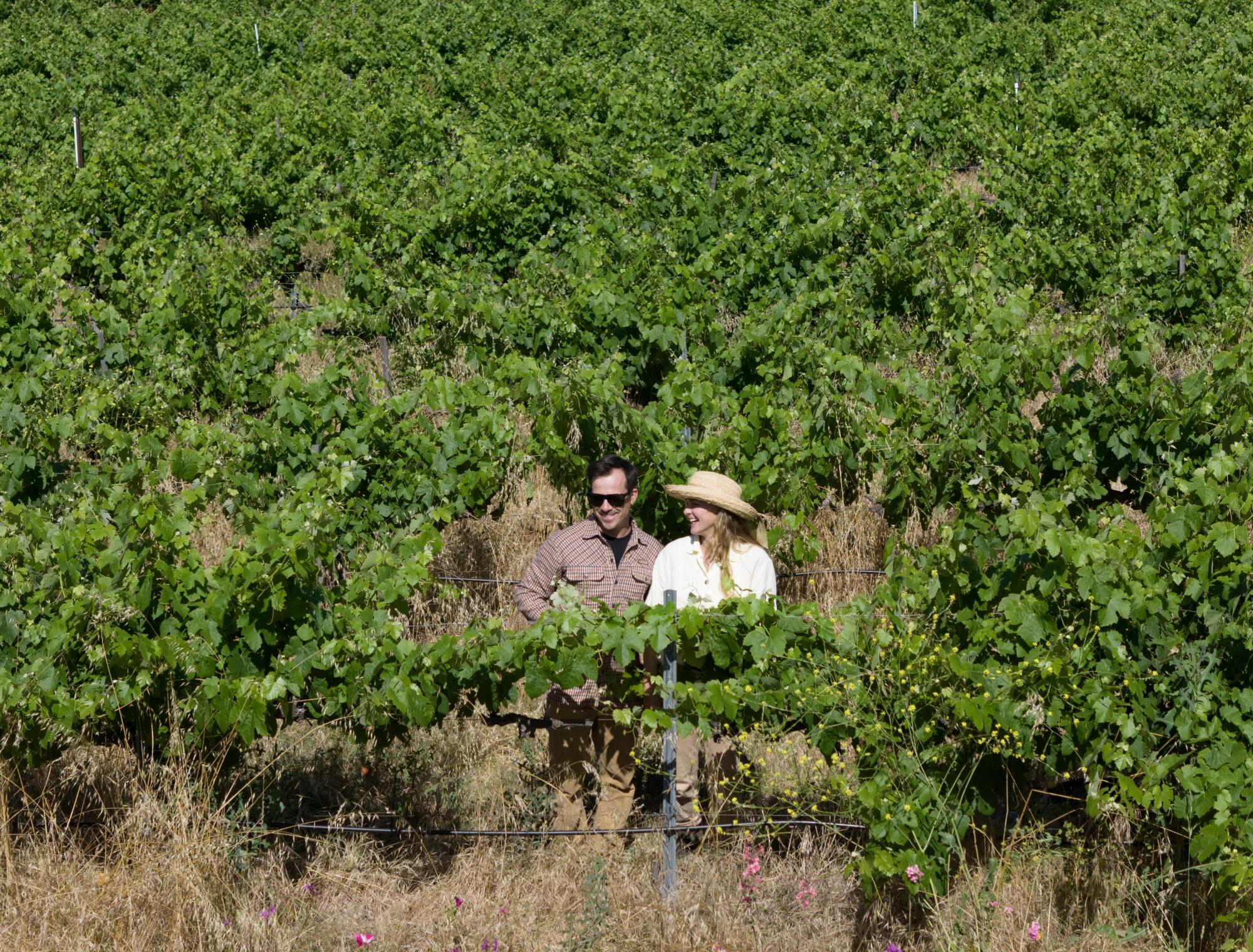
David Rosoff is a wine expert and writer who has overseen the wine programs at several restaurants across Los Angeles.
More to Read
Eat your way across L.A.
Get our weekly Tasting Notes newsletter for reviews, news and more.
You may occasionally receive promotional content from the Los Angeles Times.
